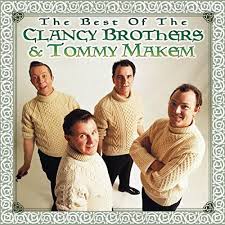Tonight’s topic is Ship Manifests.
Many Irish Americans know very little about their Irish roots and don’t know how to research their ancestors. My wife is one of them.
Many others, such as me, do know. I know where in Ireland all four of my grandparents were born and when they immigrated here.
But DNA testing found that I am only 95 percent Irish despite all four of my grandparents being born there.
My wife’s DNA test indicates she is even more Irish than me at 99 percent.
Even so, DNA testing can be a dead end for people whose Irish roots are not recent and date back several generations.
For people facing that predicament, they might start finding out more about their ancestors by checking with the website Statue of Liberty dot org.
This website has a free Ellis Island Passenger Search database with 65 million records of passengers arriving at the Port of New York from 1820 to 1957. That covers 137 years.
Some passenger records are more complete than others.
Many include their age, date of arrival, the ship’s name, nationality, marriage status, birthplace, occupation, last residence overseas, and final destination.
Some even have information about how many bags a passenger had, the amount of money they carried, and where they stayed on the ship.
We have all heard stories about famous people who arrived in the United State with $6 or $20 in their pocket and have wondered how the author knew that. Was it made up? No, it came from a ship’s manifest.
The website has a Genealogy Primer page with tips on how best to utilize the database.
In addition, questions can be emailed to ContactUs@LibertyEllisFoundation.org.
I tested this database earlier today by typing in the name of my mother’s mother, Mary Delia Crehan.
Instantaneously, it provided one record.
The record showed that Mary Delia Crehan traveled aboard the ship, President Fillmore, which left Queenstown in Ireland in June of 1922. She is listed as 20 years old, which coincides with her often-told story about leaving to avoid marrying the farmer up the road whose mother had just died.
Clicking on the ship’s manifest showed that her home was in the townland of Ballyvoneen in county Galway. I already knew that general location to be true because a separate Google search produced a map showing that Ballyvoneen is close to the hamlet of Ahascragh, which she often spoke of as her hometown.
A townland is a parcel of land that’s considered big enough to support one farm, so it’s generally very tiny.
I also visited my grandmother’s ancestral home back in the mid-1970s as a college student, meeting her sister Lizzie and two of her brothers.
The 1922 ship’s manifest also indicated that my grandmother planned to disembark in Boston. And I know she had another brother who lived there.
I also know that not long after arriving in Boston she took another boat to New York and lived temporarily with an aunt on Long Island. That aunt got her a job as a maid with a wealthy family on Long Island’s North Shore.
The ship’s manifest doesn’t contain those details, but it is a good starting point for further research to look for records such as a baptismal certificate.
If you know from reading a ship’s manifest where a passenger came from, it isn’t too hard to find the local Catholic church and request a baptismal certificate.
Hometown churches often have other records. The church where my father’s father was baptized had a note about a letter it received from another church in New York City where he planned to get married. That church in Manhattan was requesting a copy of his baptismal certificate. That led to getting information about my grandfather’s marriage to my other grandmother.
The national AOH last month published a story about the first person who passed through Ellis Island when it opened on New Year’s Day in 1892. Link: https://aoh.com/2023/03/16/irish-american-heritage-month-annie-moore-first-trough-the-golden-door-2/

Her name was Annie Moore, who was emigrating from Ireland with her younger brothers Philip and Anthony. Her story is well known.
There’s a statue of her and her brothers in the Irish port of Cobh in county Cork, which back in the 19th Century was known as Queensland. A reporter from the New York Times who was on hand to chronicle the event described her as “a little rosy-cheeked Irish girl.”
It’s a cause for personal reflection for me because I spent my own career as a newspaper reporter, and I think about how infrequently my fellow journalists now refer to new immigrants on such favorable terms.
-30-


